Please support Game Informer. Print magazine subscriptions are less than $2 per issue
The History Of Crystal Dynamics
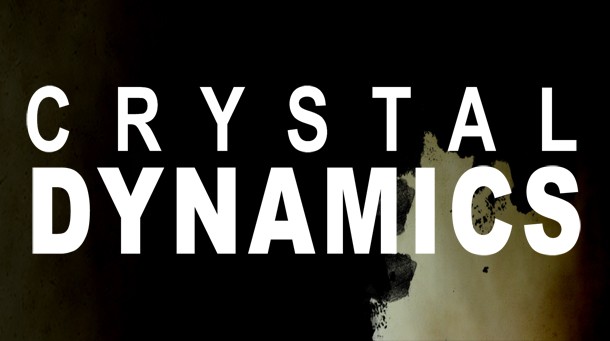
The studio behind the upcoming Tomb Raider game has a long history in
the games business, but its lineage of luminary alums cements Crystal Dynamics' stellar reputation.
In 1992 it would have been hard to imagine that Crystal Dynamics would become a hotbed for game creators. We spoke with Noah Hughes about the early days of that small studio, and how it grew and changed over nearly two decades, evolving into a triple-A development house responsible for over 30 games. Hughes currently fills the role of experience director on the upcoming Tomb Raider title. Having begun at the studio way back in 1993, he’s been present during the creation of many major games in the company’s history, and he has seen some brilliant gaming minds come and go from the studio. 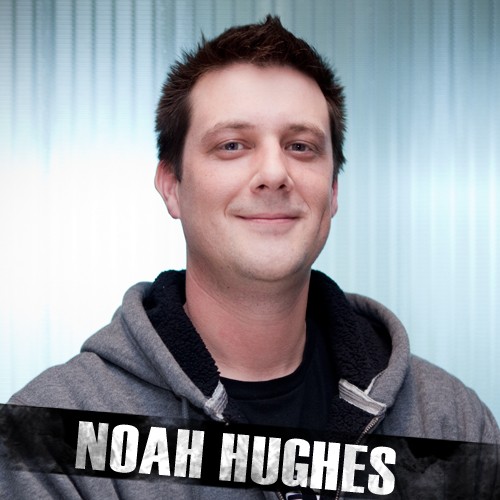 “The company was founded by Madeline Canepa, Judy Lang, and Dave Morse,” Hughes tells us. “Madeline was running the company when I started here. She gave me my first job. Dave Morse – it’s interesting – was a co-founder of the Amiga. I was a huge fan of the Amiga, so I was always in awe of that.” Even in those early days, Crystal Dynamics established itself with a reputation for tackling unique projects that set it apart from other development houses. “As a small, start-up developer, we had a lot of heart,” Hughes continues. “We were our own publisher as well, and that idea of taking on the big publishers and creating our own IPs was super exciting to us at the time. “
“The company was founded by Madeline Canepa, Judy Lang, and Dave Morse,” Hughes tells us. “Madeline was running the company when I started here. She gave me my first job. Dave Morse – it’s interesting – was a co-founder of the Amiga. I was a huge fan of the Amiga, so I was always in awe of that.” Even in those early days, Crystal Dynamics established itself with a reputation for tackling unique projects that set it apart from other development houses. “As a small, start-up developer, we had a lot of heart,” Hughes continues. “We were our own publisher as well, and that idea of taking on the big publishers and creating our own IPs was super exciting to us at the time. “
Those early days were dominated by the development of games for the ill-fated 3DO. Games like Crash n’ Burn and Star Control II were notable entries for the console, but the most memorable for many gamers was a little would-be mascot named Gex. The first Gex title released in 1994, and crossed over to other systems like the Saturn and PlayStation. “One of the first games that put us on the map was Gex. That was sort of envisioned as a mascot game for the 3DO platform,” Hughes explains. “We really wanted to give a character personality. We had Dana Gould voicing Gex, and it was really cool to see a character come to life more than you’d seen in previous platformers. There was that idea of creating a strong intellectual property built on characters that people fell in love with. People wanted to come back there.”
At the same time that games like Gex were hitting it big, the studio saw some remarkable personalities come and go. “As part of the crew back then, we had Mark Cerny as our resident super genius programmer. Even then, he had brilliant design insights. He had done Marble Madness and Sonic 2; in fact, a lot of the early crew came from Sega. Madeline Canepa came from Sega. Mark Cerny had come from Sega. He was really instrumental in creating our early engines that were able to draw these 3D streaming worlds. Crash n’ Burn, Total Eclipse, and Off-World Interceptor were all based on that core technology.” After his time at Crystal, later years would find Cerny dipping his hand into any number of development projects, first through his time at Naughty Dog establishing franchises like Crash Bandicoot and Jak and Daxter, and later as a consultant on games like Ratchet & Clank, Uncharted: Drake’s Fortune, and Heavenly Sword. Cerny was awarded the IGDA Lifetime Achievement Award in 2004.
Another major voice in development spent formative years at Crystal Dynamics. Jeronimo Barerra worked on titles like Off-Road Interceptor and Hoard, but he has since moved over to Rockstar Games, where he presently serves as vice president of development. In his role at Rockstar, Barrera has been instrumental in the creation of titles like Grand Theft Auto III, Bully, and Red Dead Redemption, among many others. 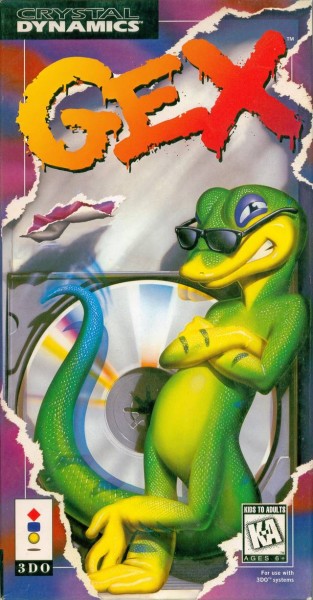 The mid to late '90s saw more unique hits rolling out of Crystal Dynamics, including the amusing Blazing Dragons, 2.5D platform/action games Pandemonium 1 and 2, as well as two excellent sequels to Gex. But one of the most compelling new properties published by Crystal Dynamics was Blood Omen: Legacy of Kain, a moody and atmospheric project that emerged out of a partnership with Denis Dyack and his Silicon Knights studio. “The first Legacy of Kain game was a partnership with Silicon Knights. It was incredibly exciting to work with another talented group like that. We drew a lot of our inspiration, not just from our own experiences, but working with other people that were essentially another developer, just like us. But we were publishing their titles.”
The mid to late '90s saw more unique hits rolling out of Crystal Dynamics, including the amusing Blazing Dragons, 2.5D platform/action games Pandemonium 1 and 2, as well as two excellent sequels to Gex. But one of the most compelling new properties published by Crystal Dynamics was Blood Omen: Legacy of Kain, a moody and atmospheric project that emerged out of a partnership with Denis Dyack and his Silicon Knights studio. “The first Legacy of Kain game was a partnership with Silicon Knights. It was incredibly exciting to work with another talented group like that. We drew a lot of our inspiration, not just from our own experiences, but working with other people that were essentially another developer, just like us. But we were publishing their titles.”
Blood Omen established the unique world of Nosgoth, and Crystal Dynamics took that universe in new directions with the 1999 release of Legacy of Kain: Soul Reaver. It was there that many gamers first encountered the brilliant storytelling of Amy Hennig. “Amy Hennig did an amazing job of expanding the world of Nosgoth, and creating Soul Reaver, as an additional brand within the Legacy of Kain franchise,” Hughes says. “She was an amazing designer, and really an incredible storyteller. One of the things I love about Soul Reaver is the richness of the world and the characters. She went on to Naughty Dog. We actually had a group of guys and girls that ended up going down there. We had Evan Wells, who is now running Naughty Dog along with Christophe Balestra. He had worked on Gex as a designer, initially, and Richard Lemarchand was on that team as well.”
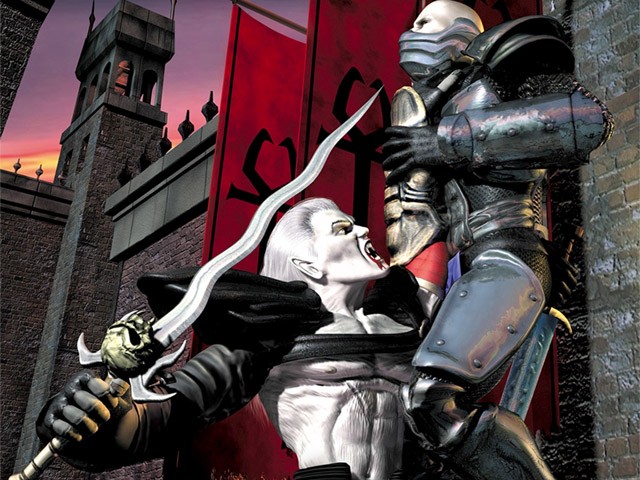
The Legacy of Kain series had two distinct branches, one focusing on Kain and the other on Raziel
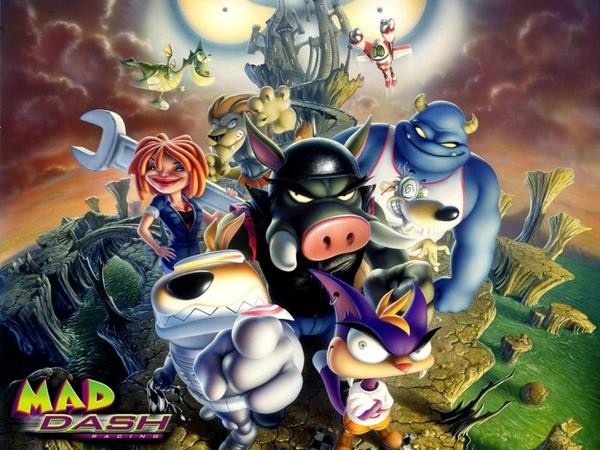
Crystal Dynamics has over 30 games, including interesting character-driven titles like Mad Dash Racing and Whiplash
For a time, Noah Hughes worked outside of Crystal, but it was another well-known video game developer who drew him back into the fold. “There was a little time that I went down to LA, but it was Glen Schofield who dragged me back to Crystal a few years later,” Hughes describes. “He and I worked on Mad Dash together, and I had taken over what became Whiplash when he left. But Glen went on to create Dead Space, and is now heading up Sledgehammer Games.”
During the coming years after his return to the studio, Hughes worked with any number of talented developers, but he remembers Cory Stockton as one person who moved on into another interesting role. Stockton ended up at Blizzard, where he became one of the chief developers continually working to improve the feel of the world’s biggest MMO. Most recently, Stockton served as lead content designer for World of Warcraft: Cataclysm.
Even as the late '90s and early 2000s saw a constant flow of talented creators coming through the studio, the studio itself experienced major infrastructure changes. By 1998, Crystal Dynamics’ time as an independent developer and publisher of games was drawing to a close. The studio had been dramatically downsized over the two prior years. In 1998, Eidos Interactive purchased Crystal Dynamics, laying the groundwork for the franchise that would eventually define Crystal in the following decade. “Eidos had a focus on character-based games as well. And we had proven ourselves in the context of character heavy games, and the action/adventure genre in general,” Hughes says. “Our relationship with them was really strengthened when they gave us Tomb Raider. For them, it was a chance to breathe new life into the franchise. And for us, it was an opportunity to leverage our more mature technologies and apply them to something historically significant.” Starting in 2006, Crystal began releasing new installments of the Tomb Raider franchise, a project that resulted in a brand new trilogy that would simultaneously do honor to the original games but inject new life for the 21st century. “Tomb Raider Legend was a great opportunity to show something fresh for the franchise in the context of what people had seen before,” Hughes says. “But then Anniversary edition was super exciting as well, because it kind of allowed us to go back to the roots of the franchise and understand even better what made the franchise tick.”
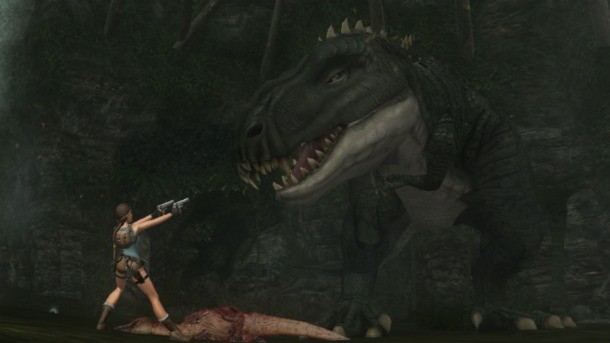
Tomb Raider: Anniversary took the events of the original game and redesigned the levels and visuals for the modern player
Those more recent years found Doug Church completing extensive design work on Tomb Raider: Legend, laying the groundwork for that new trilogy. Church was already a well known name in the development world by the time he came to Crystal, having been instrumental in the creation of games like Ultima Underworld, System Shock, and Thief. Church would depart soon after his work on Legend to join Electronic Arts.
The recent Tomb Raider trilogy also afforded Crystal the opportunity to work with Toby Gard, the man behind the creation of Lara Croft in the first place. “We’ve worked with Toby Gard on each of the Tomb Raiders we’ve done,” Hughes says. “His perspective on Lara as a character and her world has been great. And beyond that, he’s just super talented and an incredible resource for the property as a whole.”
Despite Crystal Dynamics' work on the recent Tomb Raider games, it was clear as the years passed that a more dramatic reinvention was required. It’s with that idea in mind that the studio is now moving forward with the complete recreation of the series. As the studio rolls into its latest new project, it’s clear that many talented designers and programmers have remained in-house with the studio, as evidenced by the impressive groundwork for this new Tomb Raider title. This effort will fall under a new publishing banner, as Crystal’s parent company, Eidos, was purchased by Square Enix in 2009. “Ultimately, a lot of the people have gone on to do other things, but we have a ton of talented people who are still in the studio,” Hughes says. “Going forward, they will be known for things including this game. We all think this is an opportunity to put Crystal on the map in an all-new way.”
For more information on Crystal Dynamics and its work on the new Tomb Raider game, check out our cover story hub by clicking on the image below.











